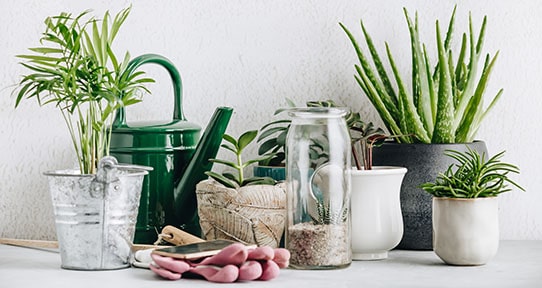15 Best Indoor Plants in India that are Really Easy to Grow
Natural plants are a great addition to any indoor environment, including homes, offices, and corporate spaces. If you’re looking for a fresh new plants to brighten up your space, we’ve put together a list of the best indoor plants in India which are easy to grow, as well as tips on how to maintain them.
However, keep in mind that each plant will require different levels of attention. Some plants don’t need much water or light at all, while others might need daily or weekly watering. Whichever option you choose, make sure to do some additional research on how to grow and maintain that specific type of indoor plants. Without further ado, here are a few tips before we get into the list!
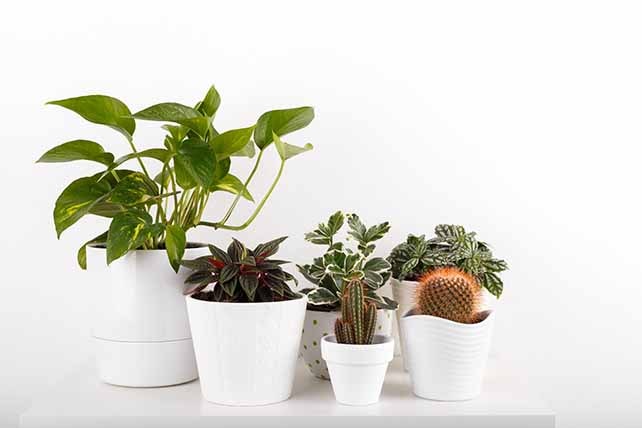
How to Grow and Take Care of Indoor Plants
Not all indoor plants require the same level of maintenance. We have included the main maintenance points in each of the plant descriptions listed below. Here are some of the general maintenance tasks you need to get used to in order to grow happy and healthy plants in indoor areas:
Watering
It is well-known that plants require water to survive. However, pay special attention to your plant’s needs because overwatering can cause serious damage to the roots and the soil. Follow the watering instructions for each plant to avoid any damage.
Light
Depending on the type, your plan will either require lots of natural light or low to medium shade. Make sure to check whether the plant you choose is suitable for placement under direct sunlight. Some plants are so sensitive that their leaves can easily burn if exposed to direct sunlight.
Repotting
It’s no secret that some plants need to be repotted every once in a while to maintain healthy and growing roots. Some plants will require larger pots overtime to provide enough space for fast growth. However, there are also plants that love growing in tight spaces. So, make sure to check what your plant’s preferences are.
Misting
Lastly, certain types of plants need to be misted daily or weekly to maintain clean and healthy leaves. However, keep in mind that misting is not the same as watering. Spraying water on the plant’s leaves increases humidity, but it doesn’t mean you shouldn’t water the plant regularly as well.
Here is the List of Best Indoor Plants in India that you can Even buy Online
Jade Plant
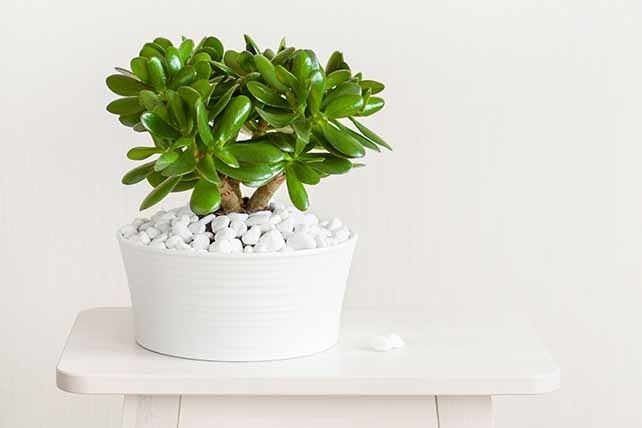
Our first choice as one of the best indoor plants in India is the Jade plant. This is a popular succulent type of plant with bright leaves shaped like an oval. The Jade plant carries a bit of tradition as people believe it brings good luck if gifted into a household. If you’re looking for the perfect house-warming gift, the Jade plant is a great choice to consider.
What’s great about this plant is that it doesn’t demand a lot of attention. It needs plenty of sunlight, that is, at least three to four hours of direct sunlight per day and it should be watered often. Make sure the soil of the Jade plant is always moist, although not too wet. To avoid root damage, use pots with drainage holes. It’s also recommended to feed the plant with high-quality fertilizer at the beginning of the season.
Summary: This succulent plant can serve as a great piece of décor for indoor spaces. Make sure to place the Jade plant at a south-facing window, so it gets plenty of natural light during the day.
Lucky Bamboo

Even though it is called a bamboo plant, the Lucky bamboo actually doesn’t come from the bamboo family. That means its maintenance needs are slightly different than you would expect. As another plant thought to bring fortune and good luck, the Lucky bamboo is a great option for offices and productive spaces. The great thing about this plant is that it is nearly indestructible, meaning it’s suitable for beginner plant growers.
When it comes to maintenance, the Lucky bamboo prefers bright but filtered sunlight. Therefore, you shouldn’t place it under direct sun. Other than that minor detail, the Lucky bamboo can grow in a variety of light conditions from bright to shaded areas. Make sure to water the soil occasionally to keep it moist but never soaking. The Lucky bamboo is sensitive to chlorine and other elements found in tap water so make sure to use filtered or bottled water only.
Summary: The Lucky bamboo is a versatile plant that can grow in pots with soil or containers with water. Either way, the plant is nearly indestructible, meaning it’s easy to grow and maintain.
Money plant

The Money Plant, also known as the Devil’s Ivy, is one of the most popular indoor plants in India available online. This plant is very easy to maintain because it needs to be watered only once per week. Its soil should be moist but never soggy. The Money Plant is a very adaptable plant variant that can not only survive but also prosper and grow in low light areas.
The ideal conditions for the Money Plant include medium-light with a medium amount of water every 5 to 7 days. Make sure to keep the Money plant in a pot with drainage holes to prevent the water from building up around the roots. Keep in mind that the Money Plant can grow over eight feet so it might require a bit more space compared to an average indoor plant.
Summary: If you’re looking for a plant that’s easy to grow yet looks great in indoor spaces, the Money Plant is a great option to consider. It doesn’t need much light or water so it won’t die even if you forget about it for a while.
Ferns
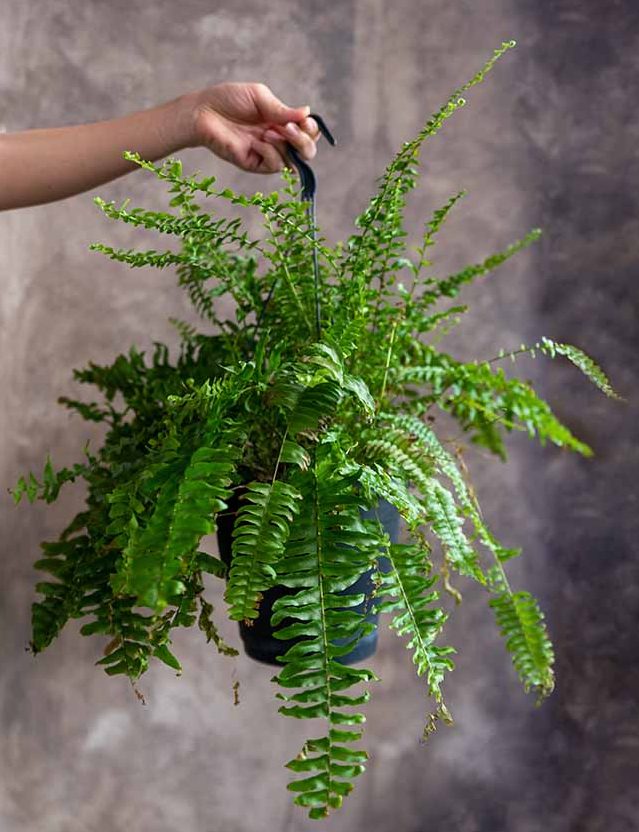
Coming to the Ferns, they are generally easy to maintain, regardless of which type of fern you choose. As some of the best indoor plants for home environments, They remain green all year long. These plants love moisture and humidity, so don’t forget to mist them every once in a while.
These plants should only be watered when the top three inches of soil feel dry. Keep in mind that Ferns don’t like cold temperatures. So keep them near a window but away from direct sunlight.
Summary: They are some of the easiest plants to keep alive, as long as you remember to mist and water them properly. To keep the plant healthy, add some pest compost to the soil.
Peace lily

Unlike the previous plants we listed, Peace lilies require a bit more attention. This beautiful blooming plant will brighten your home with flowers each season. However, keep in mind that its flowers contain pollen, which can cause allergic reactions.
When it comes to maintenance, Peace lilies need to be watered two to three times per week and misted daily to maintain humidity. What’s interesting about this plant is that it produces oxygen during the night instead of the day, which makes it one of the best indoor plants for bedroom areas.
Summary: The Peace lily plant enjoys high humidity and brightness, but it should be kept away from direct sunlight. This plant is a great choice for bedrooms and living rooms.
Adenium
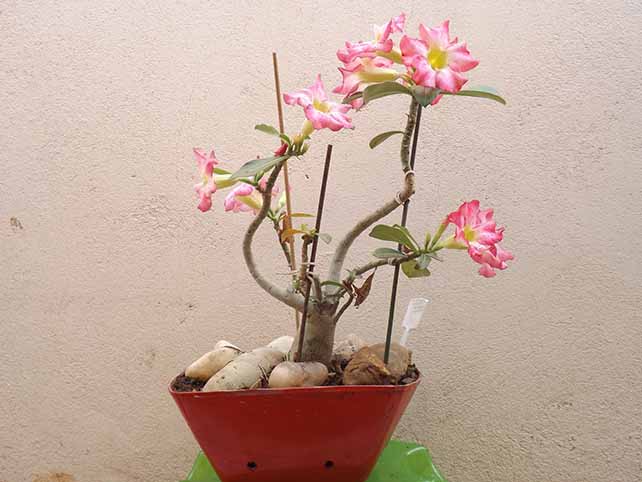
Also known as the Desert Rose, Adenium is a unique plant native to Africa that blooms even with little to no care on your part. The Desert Rose flowers come in red, white, and pink variants, and they bloom all year long. This plant is a great choice for offices and indoor areas because it only needs to be watered once every few weeks.
It is very important for the plant’s soil to dry completely between watering. Even though the plant doesn’t require much water, it does need bright and direct sunlight for at least six hours per day. You should also fertilize the Desert Rose plant once every month during spring and summer.
Summary: This is a beautiful blooming indoor plant that requires direct sunlight and little water. Additional fertilizer can help the plant produce healthy flowers all year long.
Bonsai

The Bonsai Tree plant is by far one of the most aesthetic indoor plants on the market. This pot plant looks like a miniature tree native to China and Japan. Even though it is mainly an indoor plant, the Bonsai Tree can be placed outdoors during the summer season.
As far as maintenance goes, the Bonsai tree needs watering only when its soil dries out. However, if the plant receives a lot of sun light, you will have to water it every day. The best way to determine the correct watering schedule for your plant is to use a moisture meter to check if the soil is dry or not.
Summary: The Bonsai tree plant is one of the most unique indoor plants available online. They are also easy to maintain, although the miniature tree might require occasional trimming.
Cactus

Everyone knows that cacti plants are the best choice for plant growers with little to no experience. After all, a cactus doesn’t require a lot of maintenance and it comes in many varieties to decorate your indoor environment.
Cactus should be watered once a week during the growth period. However, if the pot of the plant doesn’t have drainage holes, make sure not to pour too much water or you will risk damaging the roots. Cacti also like bright spaces and windows facing the south.
Summary: If you’re looking for unique and decorative indoor plants that don’t need much of your time and attention, then a Cactus can be a real jackpot. However, make sure you give it enough light to support healthy growth.
Areca Palm
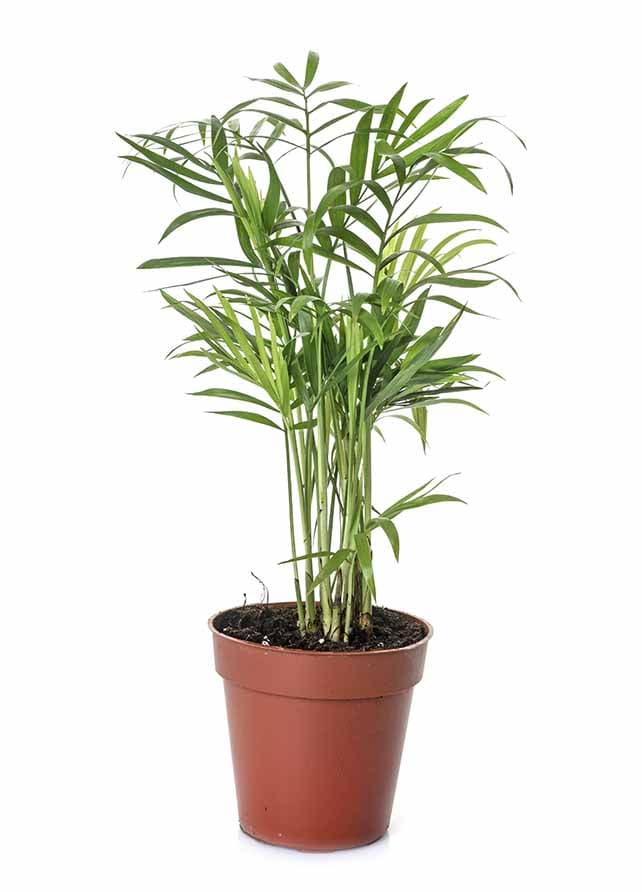
The Areca palm is not a difficult plant to keep alive, but you cannot neglect it for too long. This is one of the best indoor plants in India because of its unique appearance. However, a full grown Areca palm can be quite expensive so you should consider purchasing a small one and growing it over time.
The Areca palm requires bright yet indirect light and frequent watering to keep the soil moist. You can boost the plant’s growth with some supplements such as a pest fertilizer in spring and a micronutrient spray during the summer months. Keep in mind that the Areca palm requires repotting every two to three years and that it likes tighter pots and containers.
Summary: The Areca palm is the perfect choice for those who are looking for the unique indoor plants on the market. Even though it does require occasional trimming and repotting, this decorative indoor plant will surely be worth your time.
Ponytail Palm
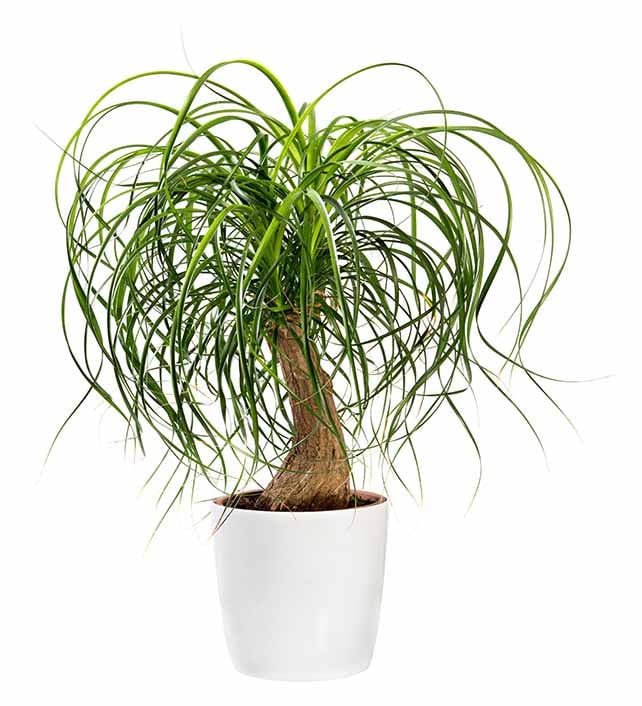
The Ponytail Palm is a long-lasting indoor plant which, despite its name, doesn’t belong to the palm family. This plant loves large amounts of light so make sure to place it at the brightest window in your home. The Ponytail should be watered only when the soil dries out.
While watering, make sure the excess water goes through the drainage hole so the soil doesn’t get soggy. Moreover, the Ponytail palm needs to be fertilized once in spring, which wraps up the entire maintenance process for this plant.
Summary: Even though it’s not a real palm, this plant will add some charm to your indoor environment and keep the space bright and fresh all year long.
Succulents

Succulents are considered to be the ideal house plant because they love sunlight and they come in many variants for different interior styles. They’re also a great choice for beginner plant growers who wish to learn more about plant maintenance.
Succulent plants need to be rotated frequently so that each side is equally exposed to light. You should only water them when the first inch of soil feels dry. Keep in mind that succulent plants don’t like to be misted so don’t make that mistake or you will risk damaging the leaves.
Summary: Succulents are the perfect challenge for new plant growers and, besides their simple maintenance requirements, these plants look great in various indoor environments.
Snake Plant

You will recognize the Snake plant by its thin and upright leaves with irregular green color which looks a lot like actual snakeskin. The Snake plant requires very little maintenance since it can survive in droughts and poor conditions. However, even though it can survive in dark areas, the ideal location for a Snake plant is a bright and sun-filled window.
What makes the Snake plant one of the best indoor plants in India are its air purifying capabilities since this plant can cleanse air and remove airborne toxins. When it comes to watering, make sure to wait for the soil to dry completely before watering it again.
Summary: The snake-like leaves and texture make this plant one of the unique decorative indoor plants which can also purify the air and get rid of bad toxins.
Popplet Plant

The Popplet plant is a popular indoor succulent plant that’s easy to take care of. It has a very unique and creative appearance with flat and circular leaves. It is also known as the “pancake plant” because of its strange-looking leaves.
Moreover, the Popplet plant requires three to four hours of sunlight each day. However, avoid direct exposure to the sun for too long in order to prevent the leaves from burning. The plant should be fertilized once a month and watered only when the soil is completely dry.
Summary: The Popplet plant truly brings a unique vibe and appearance to the room. It requires occasional watering and fertilization once per year, preferably during the spring period.
Syngonium Plant

The Syngonium plant, more popularly known as the Goose foot, is an indoor plant popular in the Asian culture. It is considered to be the perfect feng shui plant designed to bring positive energy and good flow to space. You will recognize the Syngonium plant by its distinctive arrow-shaped leaves. Its leaves need to be cleaned every three to four days to prevent dust from building up on the plant.
It is important to mention that this plant also acts as an air purifier thanks to its cleansing abilities. It can survive and grow in low light areas, although it prefers places with bright but filtered light. That means you shouldn’t expose the Goosefoot plant to direct sunlight or you might cause serious leave damage. Make sure to let the soil dry before watering the plant.
Summary: The Syngonium plant is a well-known feng shui decorative plant for indoor spaces. It is one of the most popular indoor plants with arrow-shaped leaves and air purifying capabilities.
Aglaonema Plant
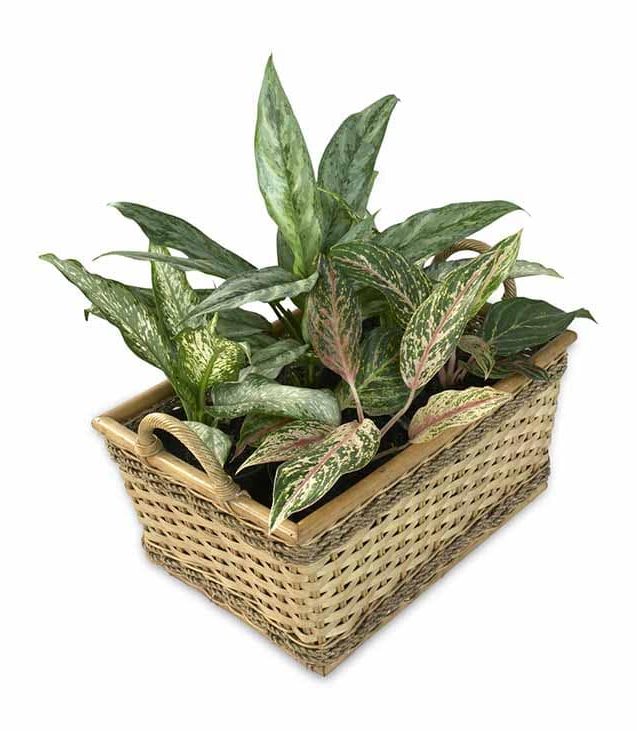
Last but not least, the Aglaonema plant is a beautiful addition to any indoor space, even though it does require a bit more maintenance compared to other plants on our list. Namely, this plant prefers moist soil during spring and summer seasons so make sure to water it frequently. However, be careful not to add too much water or the soil will become soggy.
This vibrant and colorful plant grows slowly and it can survive in different light conditions. It will accept anything from low to medium sunlight. However, keep it away from direct light to avoid damage. Keep in mind that the Aglaonema plant likes to be warm and moist at all times. Therefore, don’t forget to mist it occasionally to maintain the humidity.
Summary: The Aglaonema plant is one of the best indoor plants in India for a reason. It’s a great vine-like décor plant for indoor spaces, even though it does require a bit more maintenance.



